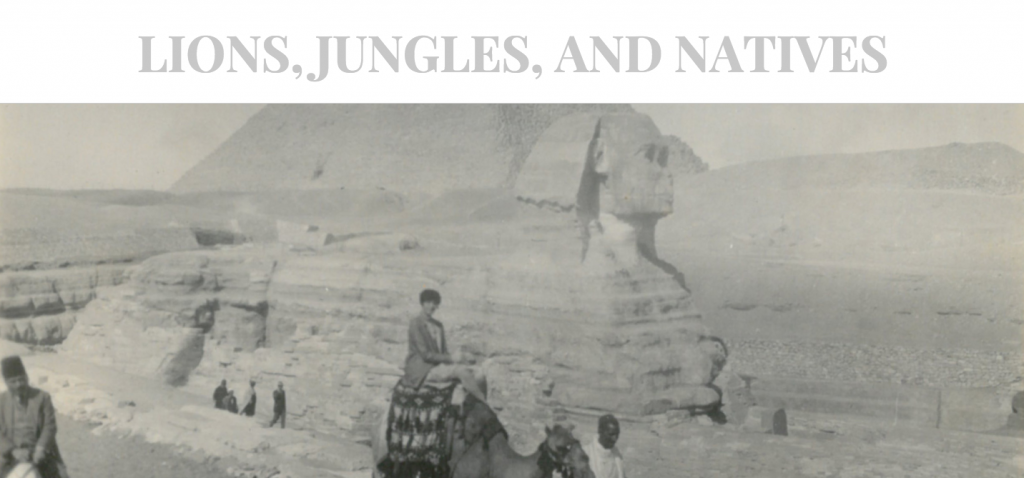A lot has happened since my last blog post. All of it progress, though some of it slow.
So far I have a developed a general appearance for my website, a semi-completed home page, a completely digitized diary, and a digitized photo album.
Before experimenting with the CSS, I drew sketches of how I wanted certain pages to look. In general, I wanted the website to follow a minimalist design that was also functional. I wanted the homepage to have a floating navigation bar with the title underneath in bold letters, a banner image, a short description of the project, and then boxes lining the bottom of the page which would take you to central parts of the website. The idea of the boxes was partially inspired by the Prism website developed by the Praxis team at the University of Virginia’s Scholars’ Lab.
Currently, I am using a simple black and white color scheme with shades of gray and navy. I think this structure sets up the color scheme for the photo albums and ensures viewability. Yet, as I continued to edit, I realized that while I got my colors right, other pieces of the puzzle were not quite falling into place. The specific layout I wanted for my homepage hindered the user experience of the rest of the website. Part of this is because I want a banner image on the top of the page that gives the user a sample of the collection. But when navigating the rest of the website, this image often gets in the way.
We fixed this problem by creating a separate HTML page that would house the homepage while the rest of the website would work with the same Omeka appearance, sans banner. Here is what the top of the page looks like so far.
Our next goal is to add an efficient navigation bar that lines the top of the page throughout the entire website.
Regarding the collection materials, I have scanned all 50 pages of the mother’s diary and cropped the photos. I have also scanned, straightened, and cropped the first photo album which consists of 96 black and white images.
The next step is to begin uploading the materials as items to Omeka. The individual photos will fall into their own collection and the same goes for the diary pages. However, thanks to a plugin called Scripto, the website will also give users the option to interact by transcribing the pages.
Moving forward, we plan to edit the webpage’s layout for the diary pages because the default Scripto structure is confusing. The ultimate goal is to produce a set-up similar to that of DIY History.
Furthermore, I am halfway done scanning the photos in the second album and should be able to upload those photos very soon.
